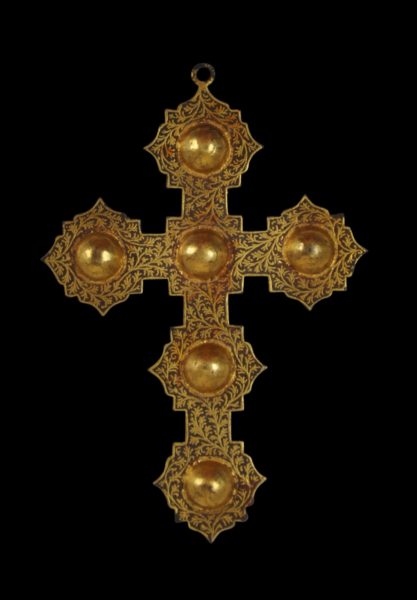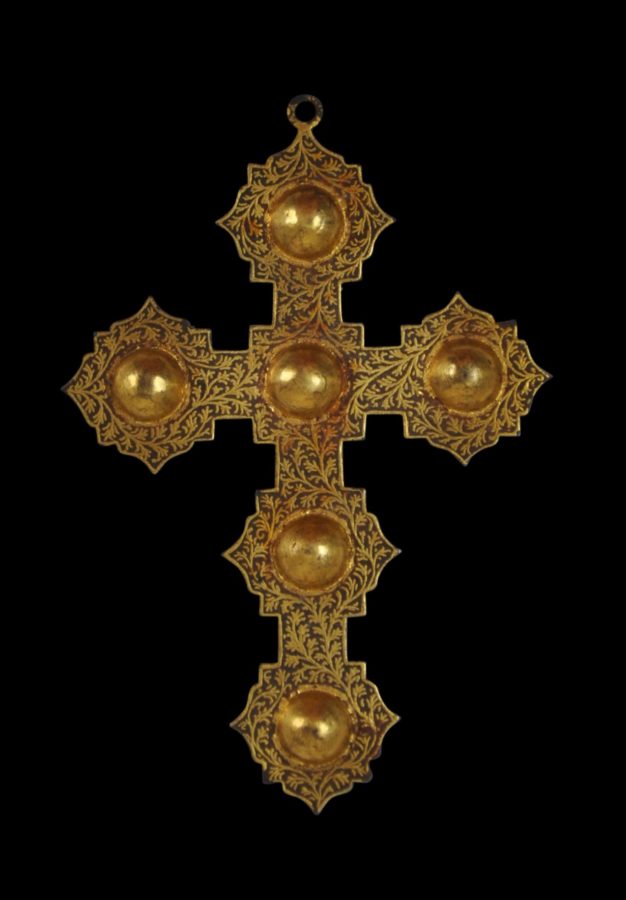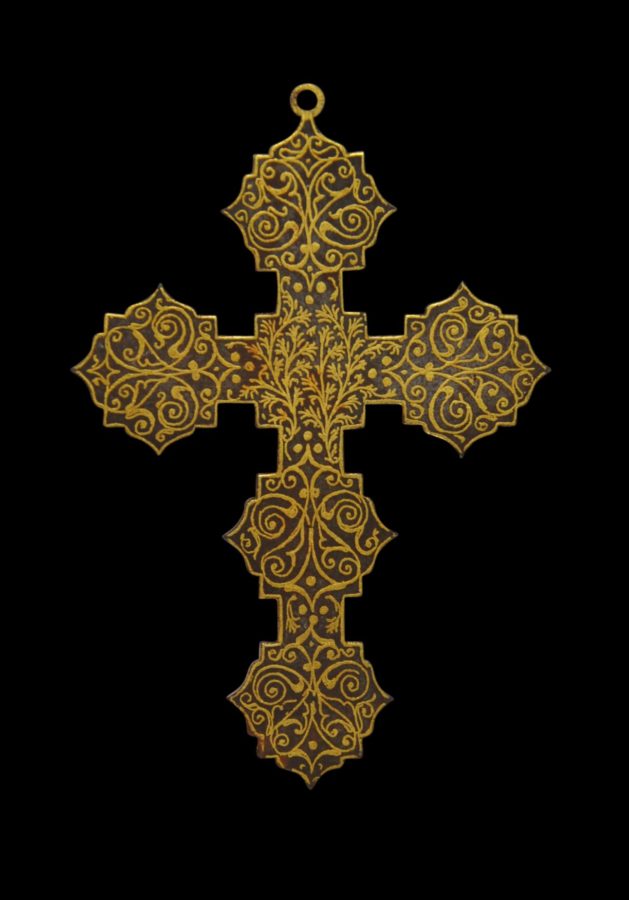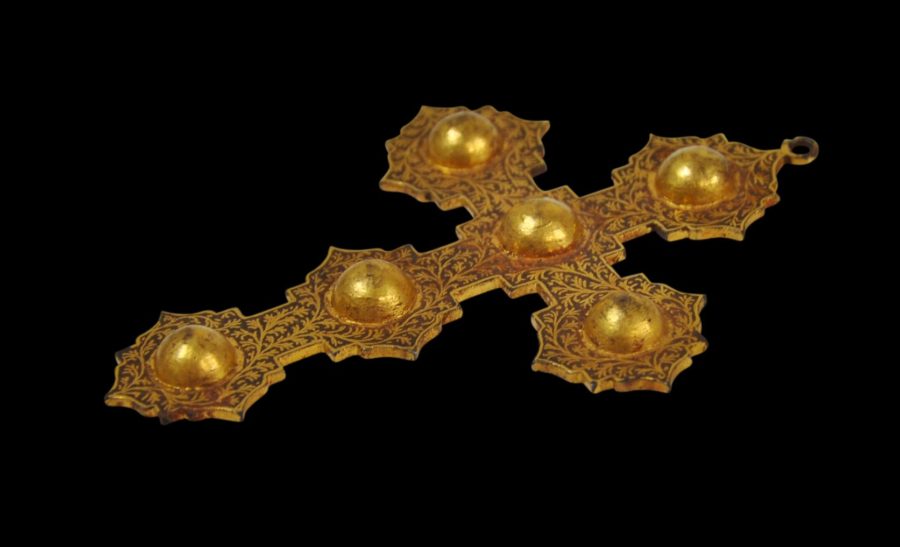This elaborate Christian cross has been decorated on both sides with gold koftgari work (also spelt kuftgari and kuftkari), a technique used by Muslim craftsmen in northern India. It is a form of damascening whereby sheet steel is engraved with the desired design and then silver or, as in this case, gold wire is hammered into the engraved grooves. The decoration is akin a meandering, fine, fern fronds, with that complimented on the back with interlocking Arabesques. The front is also decorated with six gilded, hemispherical lobes.
The number six in Christian symbolism represents the number of Man, the number of imperfection, and relates to man’s labour (and thus man’s imperfections), as in the six working days of the week.
The form of this cross with the lobed section halfway up the stem of the cross is similar to those most often associated with the Russian Orthodox Church, though this might simply be coincidence.
Both sides have been decorated with coriander leaf patterns along with arabesque scrolls.
A small loop is attached to the top of the crucifix.
It is unusual to have a Christian cross decorated with a technique normally seen on north Indian Muslim items such as pen boxes and dagger blades.
Another example is illustrated in London’s Victoria & Albert Museum and illustrated in Barnard (2008, p. 81). The V&A cross appears to have been exhibited in the Paris Universal Exhibition of 1867 and was transferred to the V&A from the India Museum in 1879.
The example here is in excellent condition, stable and wearable. It is a fine example, and an interesting cross-cultural item from colonial India. We have seen several koftgari crosses produced in 19th century northern India but this is the more elaborate and finest.
References
Barnard, N., Indian Jewellery, V&A Publishing, 2008.
Untracht, O., Metal Techniques for Craftsmen: A Basic Manual on the Methods of Forming and Decorating Metals, Robert Hale & Co., 1969.





